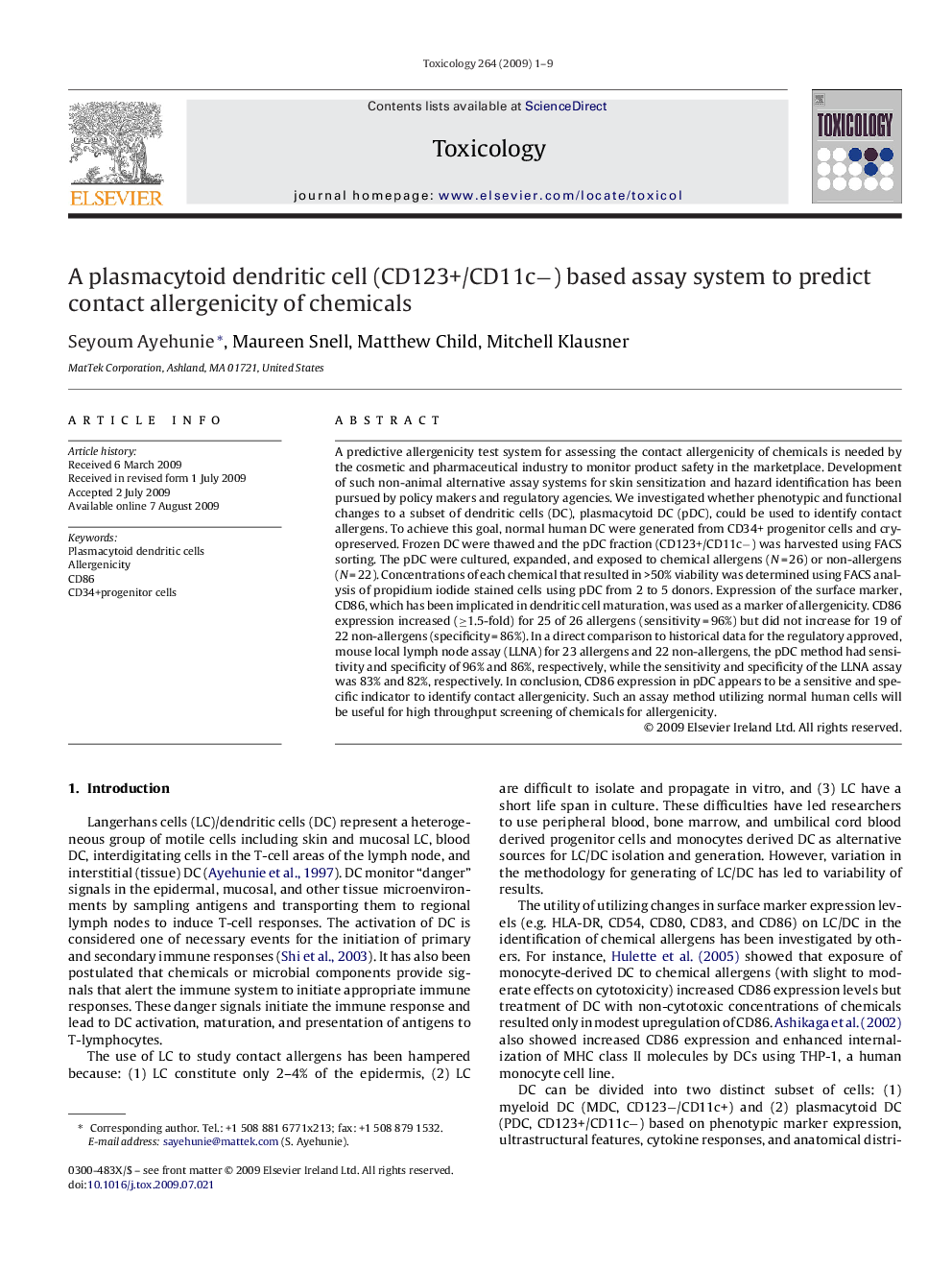| Article ID | Journal | Published Year | Pages | File Type |
|---|---|---|---|---|
| 2596453 | Toxicology | 2009 | 9 Pages |
A predictive allergenicity test system for assessing the contact allergenicity of chemicals is needed by the cosmetic and pharmaceutical industry to monitor product safety in the marketplace. Development of such non-animal alternative assay systems for skin sensitization and hazard identification has been pursued by policy makers and regulatory agencies. We investigated whether phenotypic and functional changes to a subset of dendritic cells (DC), plasmacytoid DC (pDC), could be used to identify contact allergens. To achieve this goal, normal human DC were generated from CD34+ progenitor cells and cryopreserved. Frozen DC were thawed and the pDC fraction (CD123+/CD11c−) was harvested using FACS sorting. The pDC were cultured, expanded, and exposed to chemical allergens (N = 26) or non-allergens (N = 22). Concentrations of each chemical that resulted in >50% viability was determined using FACS analysis of propidium iodide stained cells using pDC from 2 to 5 donors. Expression of the surface marker, CD86, which has been implicated in dendritic cell maturation, was used as a marker of allergenicity. CD86 expression increased (≥1.5-fold) for 25 of 26 allergens (sensitivity = 96%) but did not increase for 19 of 22 non-allergens (specificity = 86%). In a direct comparison to historical data for the regulatory approved, mouse local lymph node assay (LLNA) for 23 allergens and 22 non-allergens, the pDC method had sensitivity and specificity of 96% and 86%, respectively, while the sensitivity and specificity of the LLNA assay was 83% and 82%, respectively. In conclusion, CD86 expression in pDC appears to be a sensitive and specific indicator to identify contact allergenicity. Such an assay method utilizing normal human cells will be useful for high throughput screening of chemicals for allergenicity.
